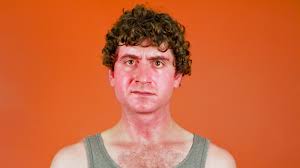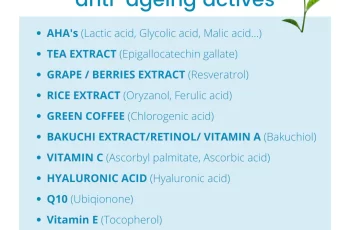Red Face When Exercising- Normal or Not?
Why Does My Face Turn Red When I Exercise?
Do you get a bright red face when exercising? You may even stay red and blotchy after exercise. Is this normal or does it mean you have rosacea, high blood pressure, or another medical condition? Is there anything that can be done to prevent facial flushing?
What causes a red face?
Why Does My Face Turn Red When I Exercise?
What causes a red face when you exercise?
Why do I get red, blotchy skin after exercise?
Is my red face after exercising rosacea?
How to prevent a red face when working out?
What chemicals in sunscreen should I avoid so I wont get a red face when exercising outside?
How to get rid of a red face after exercising?
What can cause a red face besides exercise?
References
What causes a red face when you exercise?
When you exercise, blood flow increases to your skin making it look pink, red or blotchy.
This is one of the ways that the body helps lower it’s temperature and it is completely normal.
However, some people, especially those with very light skin, get an extremely red face after exercise and it can last over an hour.
Why do I get red, blotchy skin after exercise?
Increased blood flow to the skin causes a red face.
A extremely red face that lasts along time after exercise may be rosacea.
Even if it not true rosacea, rosacea prescription medication that prevent dilation of the blood vessels can help prevent a red face when you exercise.
Ask your doctor about oxymetazoline.
Find a dermatologist or medical provider near you here.
Is my red face after exercising rosacea?
Rosacea is a skin disorder that is progressive when not treated.
If you have normal blood pressure and are healthy but your face gets very red when exercising, you may have rosacea. Learn more about rosacea in men here.
Getting on a soothing skin care routine will help.
The first step is learning your Baumann Skin Type. If you are using the wrong skin care products, this can make your face get really red with exercise even if you do not have actual rosacea.
Take the Quiz
How to prevent a red face when working out?
I live in Miami where it is very hot so I am often asked by patients “How to keep my face from getting red when working out?” This can be especially troublesome problem when exercising outdoors.
Here are some tips to help prevent a red face while running or exercising:
Avoid chemical sunscreens that can cause a skin rash when used in the sun (photoallergy)
Put ice in a metal water bottle so your beverage is really cold. You can roll the cold metal bottle on your face to cool it
Ask your doctor about a medication called Rhofade that helps shrink blood vessels on the face preventing redness when exercising. Apply it 2 – 4 hours before exercising for best results.
Eat lots of fruits and vegetables to stabilize your microbiome which plays a poorly understood role in rosacea
Eat salmon and flax seed oil for their anti-inflammatory properties
Use detergents such as Tide Free on the towels you use for your face when exercising
Avoid washing face with face wipes or alcohol pads
Avoid using hydroxyacids on your skin prior to exercise
Use a skin care routine for sensitive skin that matches your Baumann Skin Type
Baumann Skin Types
What chemicals in sunscreen should I avoid so I wont get a red face when exercising outside?
Avobenzone (Parsol)
Benzophenone
Butylmethoxydibenzoylmethane
Dibenzyl
Octocrylene
Oxybenzone
How to get rid of a red face after exercising?
The prescription medication for rosacea called Rhofade works by preventing blood vessels from dilating on the face.
If used regularly (on a daily basis) it can help prevent facial redness during and after exercise. It takes 2-4 hours to kick in so apply at least 2- 4 hours before exercising. Results last 12 hours so if you exercise first thing in the am, you can apply it before you go to bed so you are within the 12 hour window.
Although you can use Rhofade sporadically, it works best when used regularly with anti-inflammatory ingredients in a sensitive skin care routine that is customized for your Baumann Skin Type.
caffeine
What can cause a red face besides exercise?
All of these can cause an extremally red face after exercise:
detergents in towels
caffeine, red bull and other stimulants
emotion
heat
hormones
stress
rosacea
using the wrong skin care products for your skin type
DQH Knowledge drop: In your 20s, your skin cell turnover decreases. (Cell turnover is a key component in keeping your skin youthful.) You know what else slows down? Your collagen production. Starting in your 20s, collagen decreases by about 1 percent per year. Should you want to prevent fine lines and wrinkles, start by eliminating behaviors that contribute to premature aging. “If it’s bad for you, it’s bad for your skin,” says dermatologist Michel Somenek.
“Cigarette smoking reduces blood flow to the skin and causes premature wrinkling and a dull skin texture. Making the repeated pursed motion to inhale can also cause smoker’s lines. Alcohol and recreational drugs are toxins for the skin that damage its cellular structure and DNA,” Somenek tells us. “The faster you eliminate vices while you are young, the better chance your skin and body have to recuperate.” Also, adopting an anti-aging routine in your 20s is key. After all, the best offense is a good defense. We spoke to Somenek and experts Joshua Ross and Audrey Kunin to find out more.
Keep reading for the best anti-aging products for your 20s, according to skincare professionals.
Sunscreen
“We all know that the sun is the number one cause of skin aging and starting the prevention in your 20s is very important,” Ross says. “The majority of your sun damage won’t start to appear until you’re in your 30s, so don’t wait until you see it surface or you’ll be behind the curve. Stay ahead of it with a good-quality zinc-based sunscreen worn daily.”
Farmacy Green Defense Daily Mineral Sunscreen
An invisible sunscreen with SPF 30, plus botanical extracts meant to protect skin with tons of antioxidants. Bonus: It’s clean and fine to use under makeup.
Bareminerals Complexion Rescue™ Tinted Moisturizer Broad Spectrum SPF 30
Although we recommend you use your SPF and moisturizer separately, we also understand moments when you don’t have time or energy for that extra step. For those times, this bareMinerals moisturizer is a great thing to have on hand.
Vitamin C Serum
“A great introduction to anti-aging is to start with a vitamin C serum in your morning skincare routine,” Ross says. “It’s a powerful antioxidant that will neutralize free radicals and brighten the skin.” He adds that it’s a great way to counteract the effects of the sun’s harmful rays, which, as previously mentioned, are among the biggest causes of premature aging.
Drunk Elephant C-Firma™ Vitamin C Day Serum
The Drunk Elephant C-Firma is a lightweight serum that promises to give skin a glow by combining the brightening powers of vitamin C with ferulic acid, l-ascorbic acid, and vitamin E. The included sodium hyaluronate is meant to replace hydration loss, so you shouldn’t have to deal with any irritation.
Sunday Riley C.E.O. Rapid Flash Brightening Serum
This potent serum is jam-packed with vitamin C (15 percent, to be exact), which means it’s a potential superstar at both brightening skin and dousing it in antioxidants.
Peptides
Using peptides on your skin has many benefits, says Somenek. “The skin barrier is what defends the body against pollution, UV rays, bacteria, and toxins. It can be damaged by several everyday factors. Using topical peptides aids in building a stronger barrier,” he says. “Peptides comprise elastic fibers, which are a type of protein. These fibers help to make skin appear taut and firm. Peptides can also help repair damaged skin, relieve inflammation, and even out skin tone. Some peptides can kill acne-causing bacteria that is common in 20-somethings.”
Kunin agrees, saying, “Peptides are an excellent entry point for supporting collagen.” She recommends looking for face and eye treatments that contain these collagen-boosting powerhouses.
Charlotte Tilbury Magic Eye Rescue Cream
This Charlotte Tilbury super-emollient eye cream has a base of coconut oil and shea butter (read: it’s incredibly hydrating). Botanicals plus peptides are meant to help reduce dark circles and boost collagen, respectively.
This creamy moisturizer serves up potent collagen-boosting peptides and pycnogenol, and antioxidant-rich vitamin C. “Instead of sitting on top of the skin, peptides penetrate the outer layer so they go deep. The ‘signals’ they send tell the cells to produce elastin and collagen, which are needed for youthful-looking skin,” explains Somenek.
At-Home Peel Pads
Remember that skin cell turnover fiasco we talked about earlier? One way to help support it is by exfoliating. “Exfoliation is important to help keep skin fresh and luminous,” Kunin says. She recommends using at-home peel pads as an easy and effective way to exfoliate.
“The goal in your 20s is to fight the slowing pace of cell turnover. It is wise to use products that gently exfoliate, yet still remove oil and other impurities. Products that have Alpha Hydroxy Acids (AHA) or Beta Hydroxy Acids (BHA) are a good choice.”
According to Somenek, you should only exfoliate two to three times a week. “People of all ages are guilty of over-exfoliating and that can be too much of a good thing,” he says.
Dermadoctor Kakadu C Intensive Vitamin C Peel Pad
A few swipes of this Derma Doctor powerful peel pad promise to leave your skin glowing and smooth, thanks to the seven (yes, seven) types of chemical exfoliants, including AHA and BHA. It also contains vitamin C via Kakadu plum extract for added brightening and antioxidant protection.
KEY INGREDIENTS Kakadu plum extract is sourced from the Kakadu plum, a fruit grown in northern Australia. It contains vitamin C, which restores the skin’s natural barrier, increases collagen production, and soothes irritation.
Dr. Dennis Gross Skincare Alpha Beta® Universal Daily Peel Pads
These are the gold standard of peel pads, with a cult following and over 900 five-star reviews on Sephora. They’re easy to use and contain a blend of anti-aging exfoliating acids.
Emollient Night Cream
“In your 20s, you need to start upping the hydration in your skincare routine. You may have been cautious of over-moisturizing because of acne in your teens, but as you enter your 20s, your skin transitions and becomes drier,” Ross says. “I recommend an emollient night cream added into your evening skincare regimen.”
“Twenty-somethings need to make sure that they are not using creams that will clog their pores and cause excess oil production,” says Somenek. Opt for non-comedogenic products.
Cerave Skin Renewing Night Cream
One great choice is the CeraVe Skin Renewing Night Cream, which is a non-comedogenic night cream that leaves skin soft and glowy. It combines the moisturizing powers of ceramides and hyaluronic acid.
RoC Retinol Correxion Max Hydration Creme
“The best night cream ingredients contain retinol, benzoyl peroxide, and/or salicylic acid or hyaluronic acid. The goal is to moisturize, yet remove excess oil,” says Somenek. This Roc Retinol Correxion cream fits the bill as it contains both hyaluronic acid and retinol so it promises to moisturize while also being non-comedogenic.



